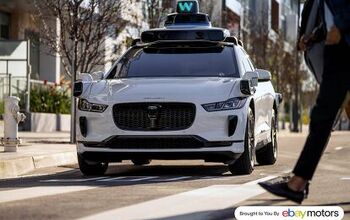Moving From Mitsubishi's Outlander Sport to the Smaller-engined Eclipse Cross Won't Pay Off At the Pumps

One’s an ancient model that continues to sell in significant numbers; the other’s a fairly radically styled new model in the same compact crossover segment. Together, the Outlander Sport (RVR in Canada) and Eclipse Cross make up two-thirds of Mitsubishi’s utility vehicle lineup.
It seems these two rivalrous siblings — separated by $2,900 and a host of powertrain differences — will share the same segment for some time to come, as there currently isn’t a next-generation Outlander Sport in the pipe. We might wait nearly three years before one appears. In the meantime, anyone willing to shell out less dough for a two-row Outlander Sport can expect to save cash on gasoline, as well.
It may have the smaller engine of the two, the Eclipse Cross has the greatest thirst.
According to figures released by the Environmental Protection Agency, the 2018 Eclipse Cross, powered by a turbocharged 1.5-liter four-cylinder (making 152 horsepower and 184 lb-ft of torque) delivers 26 miles per gallon, combined, in front-wheel-drive guise. City fuel economy is 25 mpg and highway, 28 mpg.
Adding four-wheel drive boosts the Eclipse Cross’ thirst, lowering economy to 25 combined/25 city/26 highway. In either variant, the only transmission is a continually variable automatic.
In contrast, the Outlander Sport, powered by a naturally aspirated 2.0-liter four-cylinder in base trim, rates an MPG figure of 27 combined/24 city/30 highway in front-drive guise. This figure applies to the CVT-equipped version (a five-speed manual is standard on only this trim). 2.0-liter Outlander Sports with all-wheel traction still rate a 26 combined/23 city/29 highway figure.
Clearly, the Eclipse Cross’ small-displacement turbo and greater torque pays dividends in the city, while the Outlander Sport turns teetotaller on the open road. Still, one remains the clear winner in mixed driving. Actually, even buyers of a four-wheel-drive Outlander Sport with optional 2.4-liter engine stand to get identical mileage as the 1.5-liter newcomer. In this configuration, the Outlander Sport delivers 25 combined/23 city/28 highway.
So, what gives? Not surprisingly, weight and gearing come into play here. The smaller-engined vehicle weighs about 200 pounds more than its sibling, meaning the 1.5-liter has to work extra hard to shoulder the added burden. That means higher revs and lower gearing. The Outlander Sport 2.0’s final drive ratio is 6.026; the Eclipse Cross’ is 6.386.
Less displacement is no guarantee of a greener vehicle.
Mitsubishi recorded its first American sales of the Eclipse Cross after deliveries began at the end of February. Some 49 of them made it onto the automaker’s monthly sales chart. Overall, last month proved a good one for the brand, with U.S. sales up 18.8 percent, year over year.
H/T to Bozi Tatarevic, aka “Hawkeye”
[Image: Mitsubishi Motors]

More by Steph Willems
Latest Car Reviews
Read moreLatest Product Reviews
Read moreRecent Comments
- ToolGuy I might be Batman.
- Lou_BC Well, I'd be impressed if this was in a ZR2. LOL
- Lou_BC This is my shocked face 😲 Hope formatting doesn't fook this up LOL
- Lou_BC Junior? Would that be a Beta Romeo?
- Lou_BC Gotta fix that formatting problem. What a pile of bullsh!t. Are longer posts costing TTAC money? FOOK


































Comments
Join the conversation
Jeebus I thought the Eclipse thing was just a concept, but its a real model? Sad!
I can see that. I just rented a '18 RAV4 XLE for a week over a Chevy Malibu just to see what all the CUV fuss is about and maybe to see if I'm being too hard on these vehicles, which I generally dislike. I still generally dislike. Relatively unimpressed with the driving dynamics. It felt slow and weighted down, and less buttoned down on the road compared to my '15 Accord Sport. Related to this article, it got 4-5 fewer MPG than my Accord in the same driving loop, even though both vehicles have similarly sized 4-cylinder engines - though the Accord makes 13 more HP on .1 less liter of displacement. If I drove 15,000 miles per year, that's about 105-125 gallons of additional fuel per year. Maybe that's not huge to a person who has the money to buy one of these but spread that out over all the CUVs in the country and that's a lot of excess fuel we are using, for very little reason. Even the "convenience" factor was marginal because you have to lift that huge tailgate to get into the rear cargo area, whereas you just pop the trunk in the Accord. An Accord's trunk doesn't hold as much as a RAV with the seats down but it holds enough. I think a CUV would be nice to have in some circumstances. I just didn't encounter any of those during the week I had the vehicle. I don't think it'd be worth the trade off, IMO.